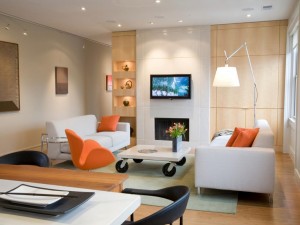So you need to light up a room but want to know more first? Well in this article we’re going to delve into light; understanding light, uses of light and learn about lights by room. After reading this article, you will have become an expert on everything you could ever know about light!
Where to begin? Well light! It boasts variety – light in general varies – probably more than anything! Daylight changes every hour, possibly even more frequently than that, and the colour changes every season with the intensity alternating too! This is what makes light so fascinating and confusing all at the same time! Because of how light changes, this will also change the light in a room so you have to be careful you furnish your home in accordance with this; for example, if you have small windows, make sure you make the most of them by not obstructing the little light the window could give, which large windows might need to be covered so as to prevent the light becoming too much at certain parts of the day.
Artificial light is often used to help light rooms where natural light isn’t enough. This light is usually background lighting, to keep it subtle and literally in the background so it isn’t noticeable that additional lighting has been used. Additional lighting can be hidden e.g behind furniture, in the pelmets of windows or around the perimeter of the room.
There are 3 different types of background lighting which can be divided into –
· general or background lighting
· local or task lighting
· accent or decorative lighting
Local or Task Lighting
Local or Task Lighting is lighting for a specific purpose, e.g reading, working at a desk or computer – literally doing anything that might need more light than the general ceiling light; lighting for a focused area. Your bulb should be at least 60w for this lighting – to ensure you are lighting the specific area to be bright enough.
Fully adjustable lamps are usually best for this situation because the light can be changed to wherever you may need and the angle of them can be changed too, so if there is a glare this is easily fixed! Don’t try and save money when it comes to task lighting because there is so many different factors that might need to be changed – you don’t want to miss out not being able to change one of those factors.
Clip-on spotlights are an inexpensive way to get task lighting; they are cheap but you can also move then around to wherever you might need to get the extra light.
This is the widest type of lighting with the options of using, down lighters, uplighters, spotlights, tracks and table lamps. They are additional to general lighting adding depth, shape and generally changing the ambiance of the room with more light. Specifically, tracks are used for lighting different areas of a room.
When deciding to use decorative lighting, you first need to decide what you want to highlight in a room – what possessions, what photos, if it’s going to be a coffee cable. This is because the lighting options will change depending on what you want to highlight. If you want to highlight a book, or bookshelf – using spotlights would be best in this situation because you can attach it to a shelf and emphasize the books.
Highlighting a photo or picture on the wall is the hardest thing to highlight – but not impossible! This is because the picture will usually be behind glass which could cause a glare. To avoid this, you need to use a broad bean so that the light is even distributed across the picture or photo. This will undoubtedly make it the focal point in any room!
Plants are also hard to highlight because they are living and you don’t want to kill them by giving them too much light – even if they are light loving! So it is essential that you read the instructions for the plant and whether or not it would be able to cope with being subjected to light.
There are also options which would mean that the plant isn’t fully exposed to light; tiny lights can be bought to be put into the pot with the plant to light it up from the bottom, however because these lights are only small, the plant would also have to be in proportion and fairly small. For bigger size pots, having a light behind and angled will light up the plant creating shadows and illuminating it.
Lighting your home isn’t easy, and it’s important you have it in your head what you want to light up, how and the affects you want in the room. If you have any questions or would just like to talk through your ideas with someone, we are always available to help. We have a website online which is there 24/7 or alternatively you can call us on 01420 520521. We look forward to hearing from you.

Leave a Reply